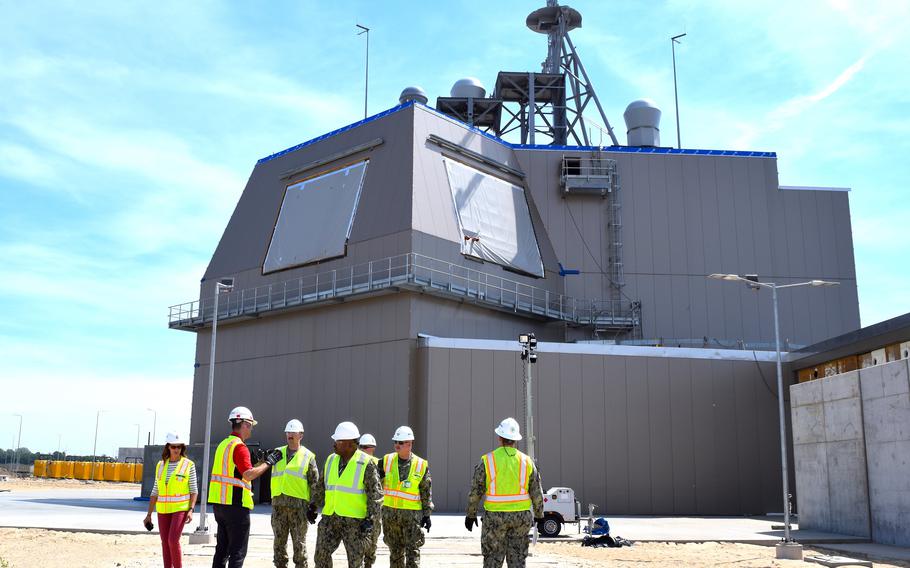
The Aegis Ashore ballistic missile defense system at Naval Support Facility Redzikowo in Poland during construction in 2019. The system is undergoing final technical upgrades and will be fully operational as early as the spring of 2024, the Navy said this week. (Amy Forsythe/U.S. Navy)
STUTTGART, Germany — The U.S. Navy’s missile defense mission in Poland is on the cusp of being added to a broader NATO effort to defend Europe from attack, marking a major step forward for an initiative hampered by repeated delays.
The Navy this week said it had taken official control of the Aegis Ashore missile defense system at its base in the northern Polish city of Redzikowo.
The system is getting final technical upgrades and will be fully functional as early as the spring, when it will operate under NATO command and control, U.S. Naval Forces Europe said in a statement Monday.
It incorporates land-based interceptors in Romania and Poland, along with Navy Aegis destroyers out of Rota, Spain, and a sophisticated early-warning U.S. Army radar positioned on a mountain in Kurecik, Turkey.
“The acceptance of the Aegis Ashore site in Poland, like its sister site in Romania, is an important step in our efforts to get (the system) ready to protect against the growing threat posed by ballistic missiles launched from Iran,” NAVEUR said.

Navy leaders visit the Aegis Ashore missile defense systems in Redzikowo, Poland, in July 2023. The Navy said this week that it had taken official control of the system, which will be fully operational as early as the spring. (Ashleigh Whitney/FDRMC)
The site in Deveselu, Romania, has been operating since 2016.
The initiative is part of a missile defense effort known as the European Phased Adaptive Approach, which was established in 2009 to counter Iranian ballistic missile threats.
The Poland part of the project was supposed to be ready around 2018, but repeated technical and construction problems at the site delayed the mission.
Rear Adm. Douglas Williams, acting director of the U.S. Missile Defense Agency, said during Dec. 7 testimony before the House armed services subcommittee on strategic forces that the Aegis system was delivered to the Navy on Oct. 1 for operational use and maintenance. The Navy formally accepted the equipment into their inventory Dec. 15, he said.
The Navy missions in Romania and Poland involve about 200 military personnel each.
“The Aegis Ashore is defensive in nature and designed to shoot down threats posed to U.S. forward deployed forces, or the security of our European allies,” NAVEUR said. “The defensive focus of Aegis Ashore is confirmed in the U.S. commitments to NATO and standing NATO policy.”
The broader missile defense project has nonetheless angered Russia despite U.S. and NATO statements that the system isn’t equipped for offensive strikes.
Russia has asserted over the years that the system could eventually be modified to counter its intercontinental ballistic missiles, with an aim of neutralizing Moscow’s nuclear deterrent capability.
In 2013, the administration of President Barack Obama attempted to address some of those concerns when it scrapped the fourth phase of the European Phased Adaptive Approach, which had called for development of weapons systems capable of countering intercontinental ballistic missiles aimed at North America.